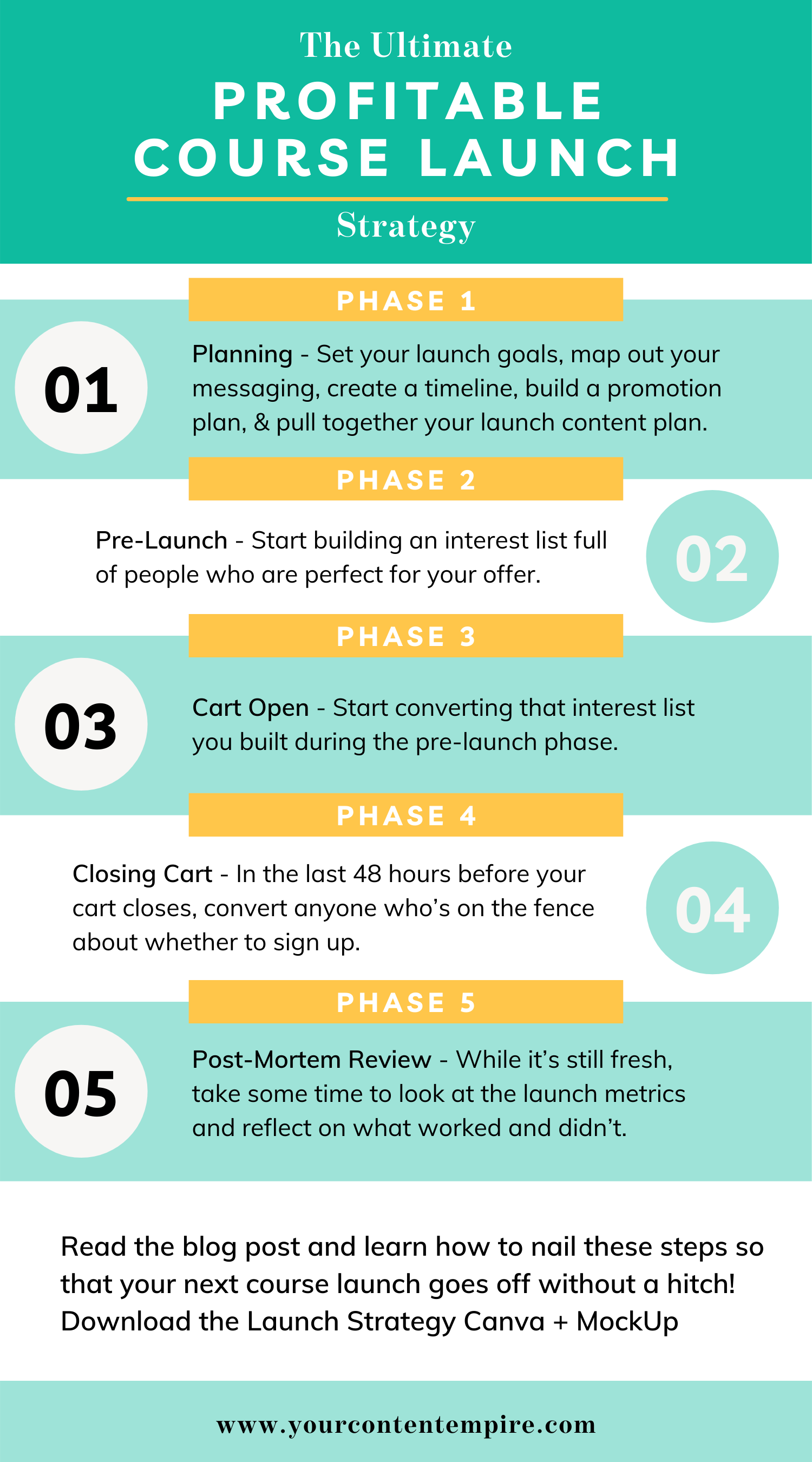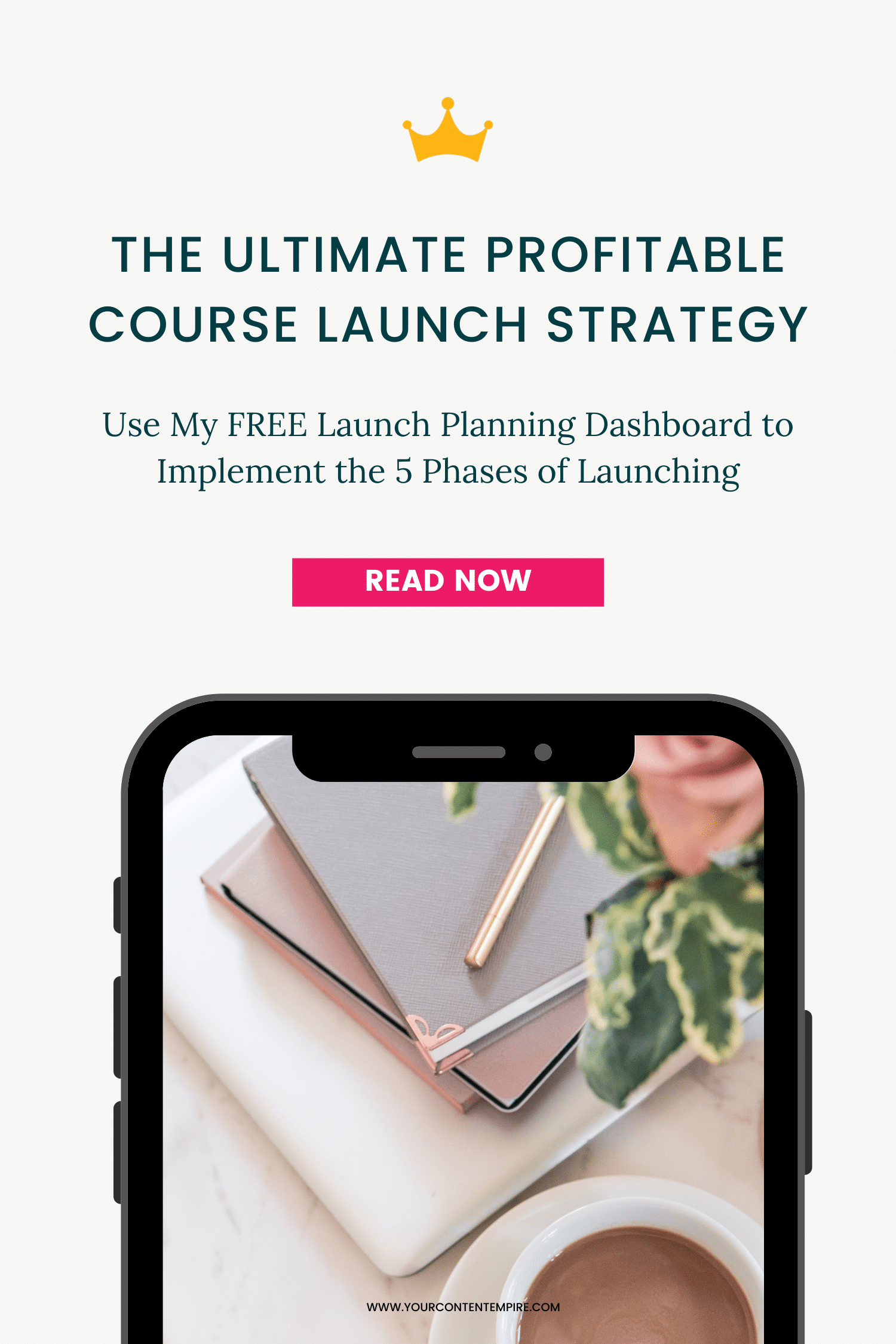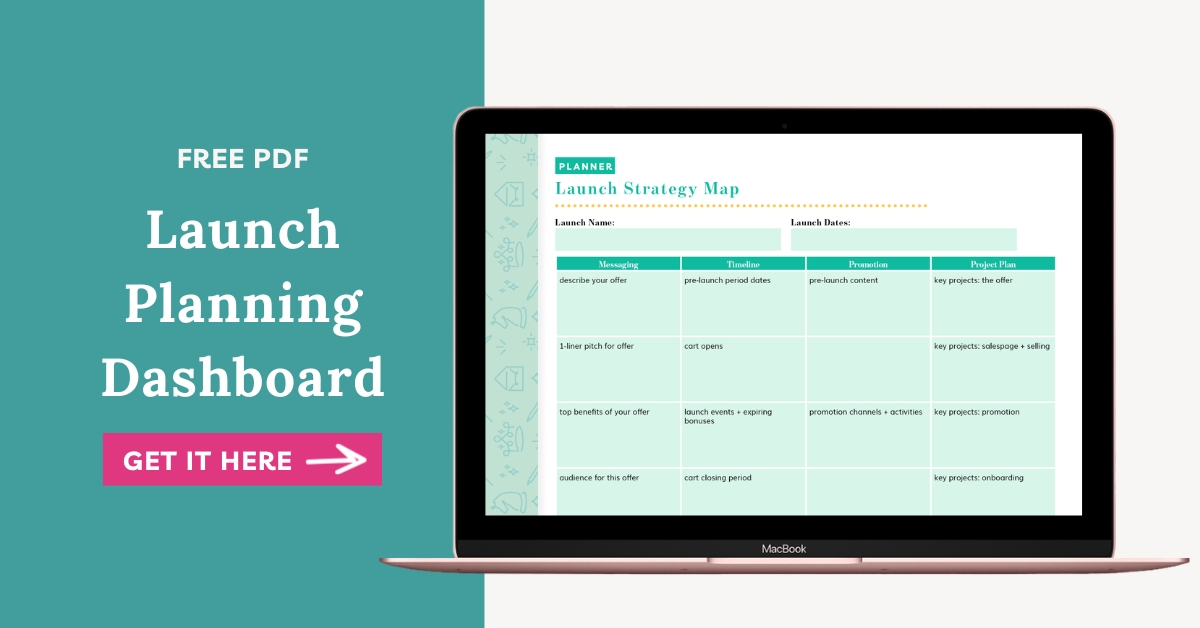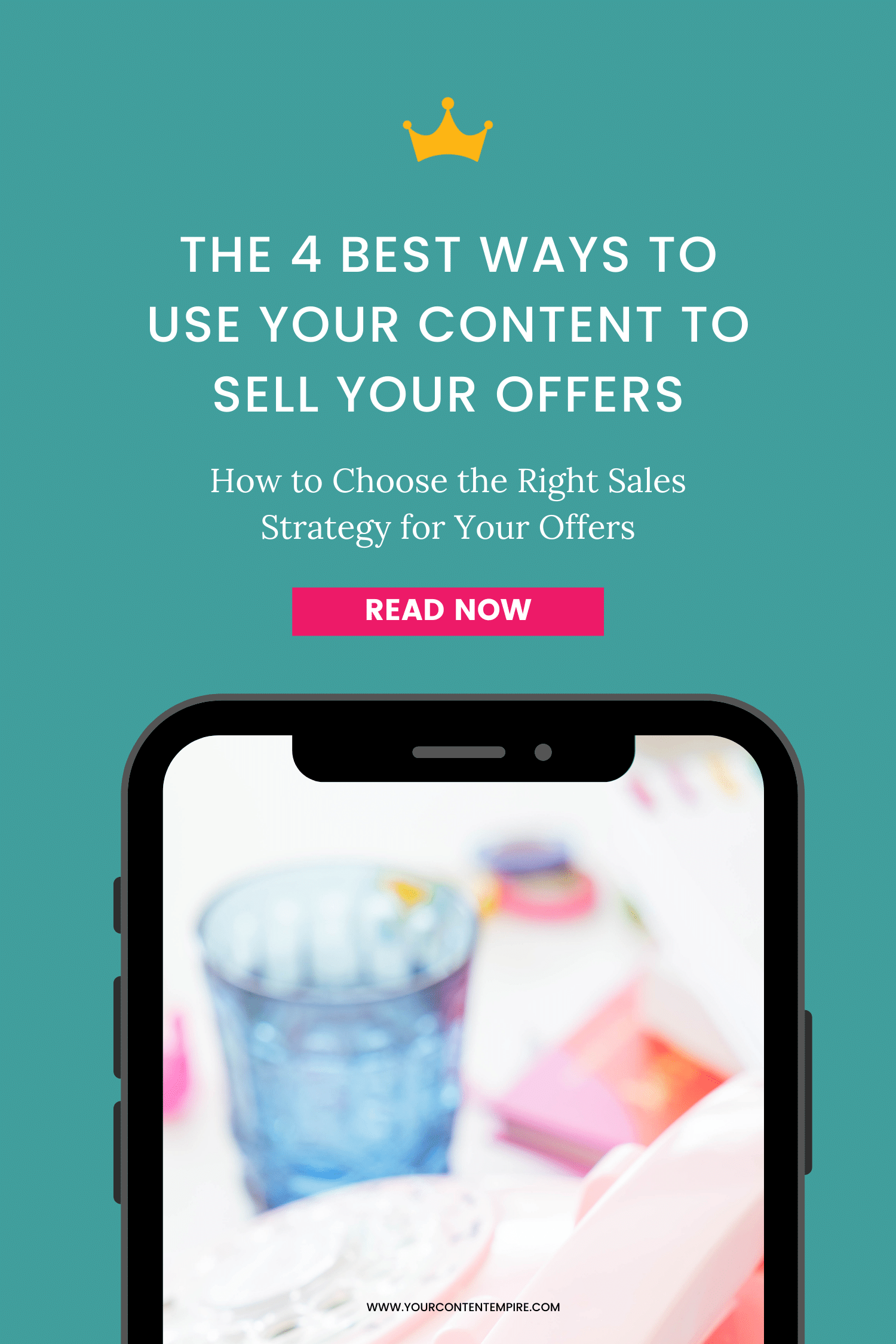Most of us have been there before. You create a program that you know is going to be an absolute game-changer for your people. You start your launch off, bubbling over with excitement to share it with everyone and anyone. And then…crickets. Every day that goes by with no sales makes you question yourself and your offer more and more. Your disappointment grows.
Pretty soon it’s the last day of your launch. Maybe you sold a couple of spots, or maybe you sold none. You wonder where it all went wrong.
Hopefully, you dust yourself off and come up with a new plan. But I’ve also seen this scenario become a nail in the coffin of people’s courses. This can’t happen anymore.
Because it likely had nearly nothing to do with the course or offer itself and everything to do with the launch strategy and execution (whether that was the positioning and messaging, the audience or pre-launch). So in this blog post, I’m walking you through how to run a profitable course launch.
Prefer to watch this blog post instead? Click on the video below!
Crafting a Profitable Course Launch Strategy
There are five crucial phases in designing and executing a profitable launch.

Let’s go through each phase:
Phase 1: Planning
The first phase of designing a profitable launch is to create a plan (I know it’s obvious, but bear with me). I usually find that there are people who love to plan and those who can’t stand it.
Having a realistic action plan for your launch beforehand will save you a lot of heartaches and wasted effort down the road.
What to do in the planning phase:
- Set your launch goals (read more on how to successfully execute a pre-launch campaign to double or triple your conversion rates)
- Map out your launch messaging
- Create a launch timeline
- Build a promotion plan
- Pull together your launch content plan
Tips for Success:
- Goal-setting tip – standard conversion rate for launches is between 1-3%.
- Spend the most time in this phase creating your messaging and testing it with your current and potential customers.
- Create a launch plan map. Looking at it this way will help you identify more opportunities and missing pieces in your plan.
Phase 2: Pre-Launch Campaign
The second phase (my favourite phase) is the pre-launch campaign.
The purpose of this phase is to start building an interest list full of people who are perfect for your offer, even before you’ve opened the cart. Think of it as a way of building up momentum so that when you finally do invite people to your offer, they’re already lining up.
If you’re ready for a deeper dive on pre-launching, read How to Create a Successful Pre-Launch Campaign and you’ll be walked through the 3 easy steps of this process in detail.
What to do in the pre-launch campaign phase:
- Release a new opt-in gift that “pre-validates” your audience (anyone who signs up is added to your interest list for the offer)
- Publish regular blog posts on the offer topic
- Get your content in front of as many people as possible
Tips for Success:
- Use Facebook ads to target cold traffic to your blog content and retarget warm traffic with your opt-in freebie.
- Design a freebie that gets your subscribers ready for the course. Think about the “pre-work” you’d like to have them complete before enrolling. How can someone be the readiest for your offer?
Phase 3: Cart Open
Your cart is open, now it’s time to change your focus from attracting an interest list to converting that interest list you built during the pre-launch phase.
What to do in the cart open phase:
- Send out sales emails
- Reach out personally to anyone who’s expressed an interest in the course
- Host a webinar or Q&A where people have an opportunity to learn more about your program
- Measure traffic to the salespage and conversions (more unique visitors to your salespage will positively impact the number of sales you make during your launch)
Tips for Success:
- Use Facebook ads to retarget your interest list and direct them to your salespage
- Ask your biz friends to help you spread the word about your program (consider adding an affiliate program to sweeten the deal for them) as your launch ambassadors.
- Create a daily launch checklist of things you’ll be doing every day (share in x number of Facebook groups, respond to any emails and questions, send any emails, etc.).
Phase 4: Closing Cart
You might think that the 48-hour period before your cart closes should be bundled in with the open-cart phase. But in this phase, your goal is to convert anyone who’s kind of on the fence about whether or not to sign up.
What to do in the closing cart phase:
- Send an FAQ email that overcomes objections that you think your ideal customers have about signing up for your offer (price, time investment, unsure if it’s for them) or even inviting them to a live FAQ call
- Send the 3 closer emails: 24 hours (entire list), Morning of (interest list), 5-6 hours (anyone who’s clicked on the previous 2 emails)
- Reach out personally to anyone who’s sent you an email or message about the course (heads-up message and invitation to talk with you directly)
Tips for Success:
- Use retargeting Facebook ads to deliver an ad to anyone who’s visited the salespage.
- Email your launch ambassadors and affiliates a day before close to thank them and remind them that there’s one more day.
Phase 5: Post-Mortem Review
Even though the launch may be over, that doesn’t mean you’re done. The work you do in your launch can be reused and improved upon for next time. That’s a lot easier to do if you take some time to look at the launch metrics and reflect on what worked and didn’t while it’s fresh.
What to do in the post-mortem review phase:
- Pull all of your numbers (analytics, sales, social media, email list) and group them in a single place where you can figure out your benchmarks as well as traffic and conversion rates.
- Reflect on what worked well and what didn’t.
- Make a copy and store any feedback or questions you received during the launch.
- Celebrate!
Get Your Profitable Course Launch Strategy in Motion
When it comes to executing a launch, there are always things to improve upon and do better. For some, they’re still doing the groundwork on the planning phase or streamlining the pre-launch campaign, while others need to work on connecting with potential customers in the closed cart phase.
Almost everyone can make changes to their launch strategy that will ensure their course is even more profitable. By maximizing your effort on each of these five phases, you’ll have a much higher chance of reaching your launch goals and making your launch a success.
Start your launch planning off on the right foot and download the Launch Planning Dashboard before you get started.







